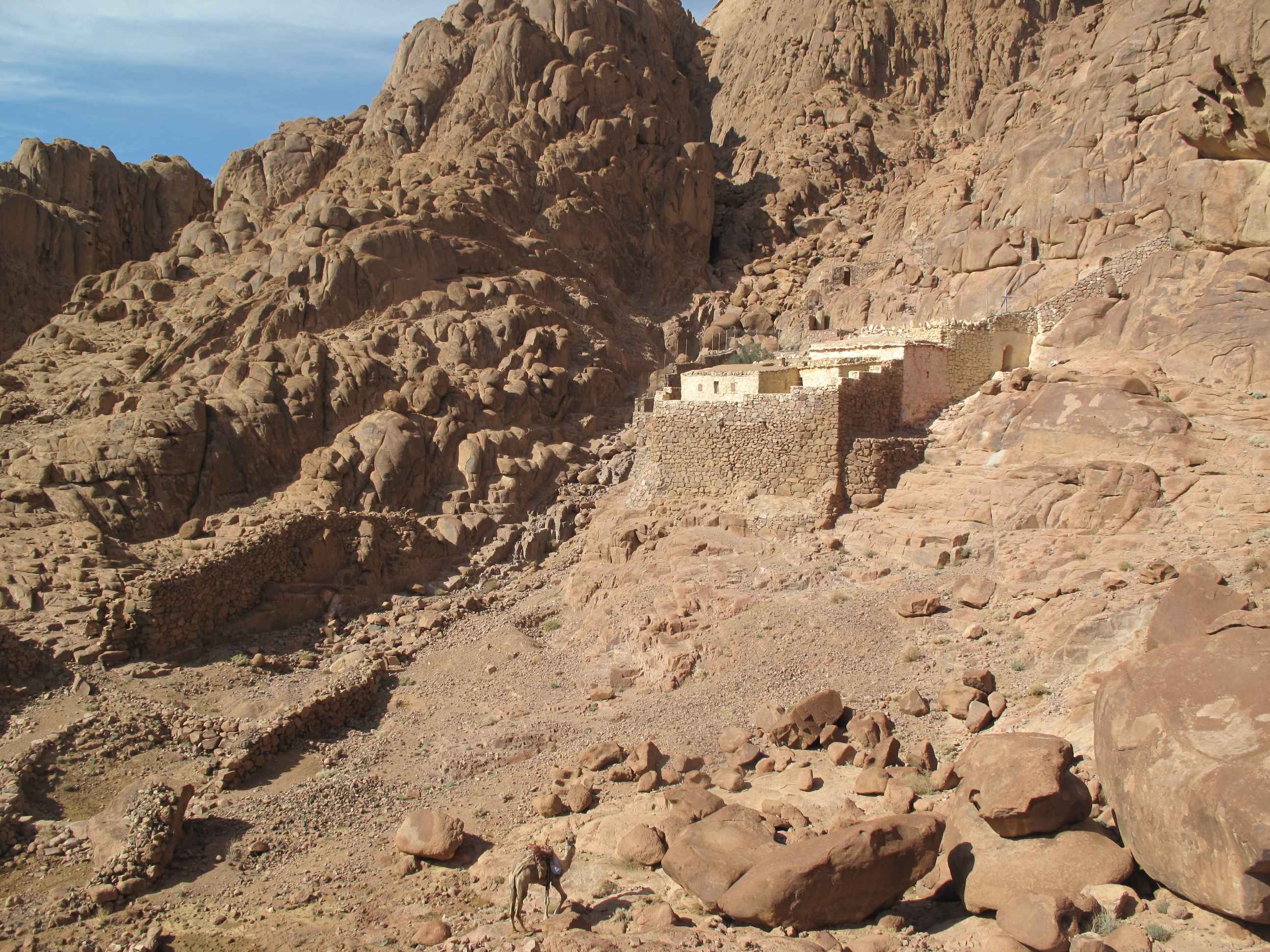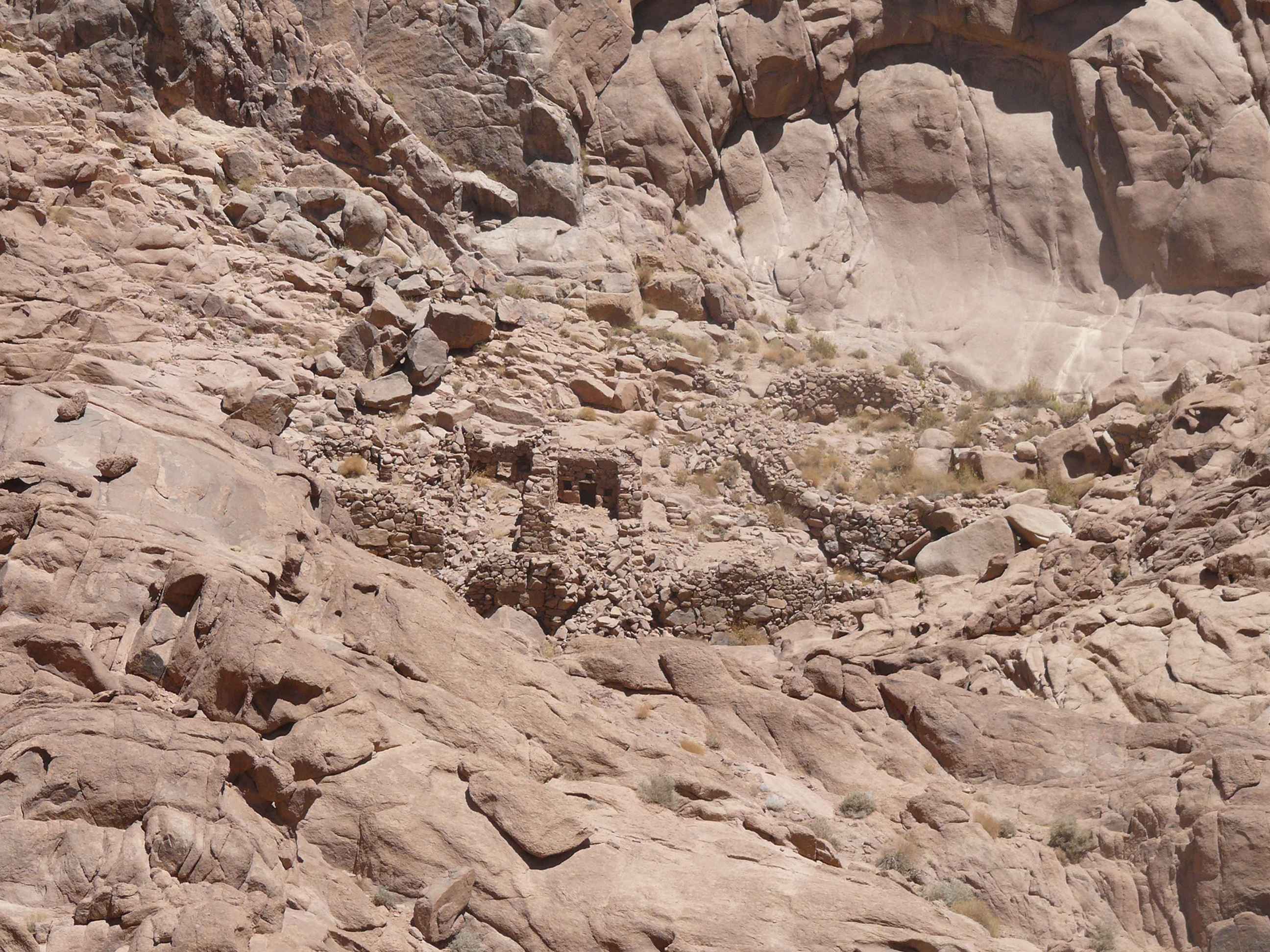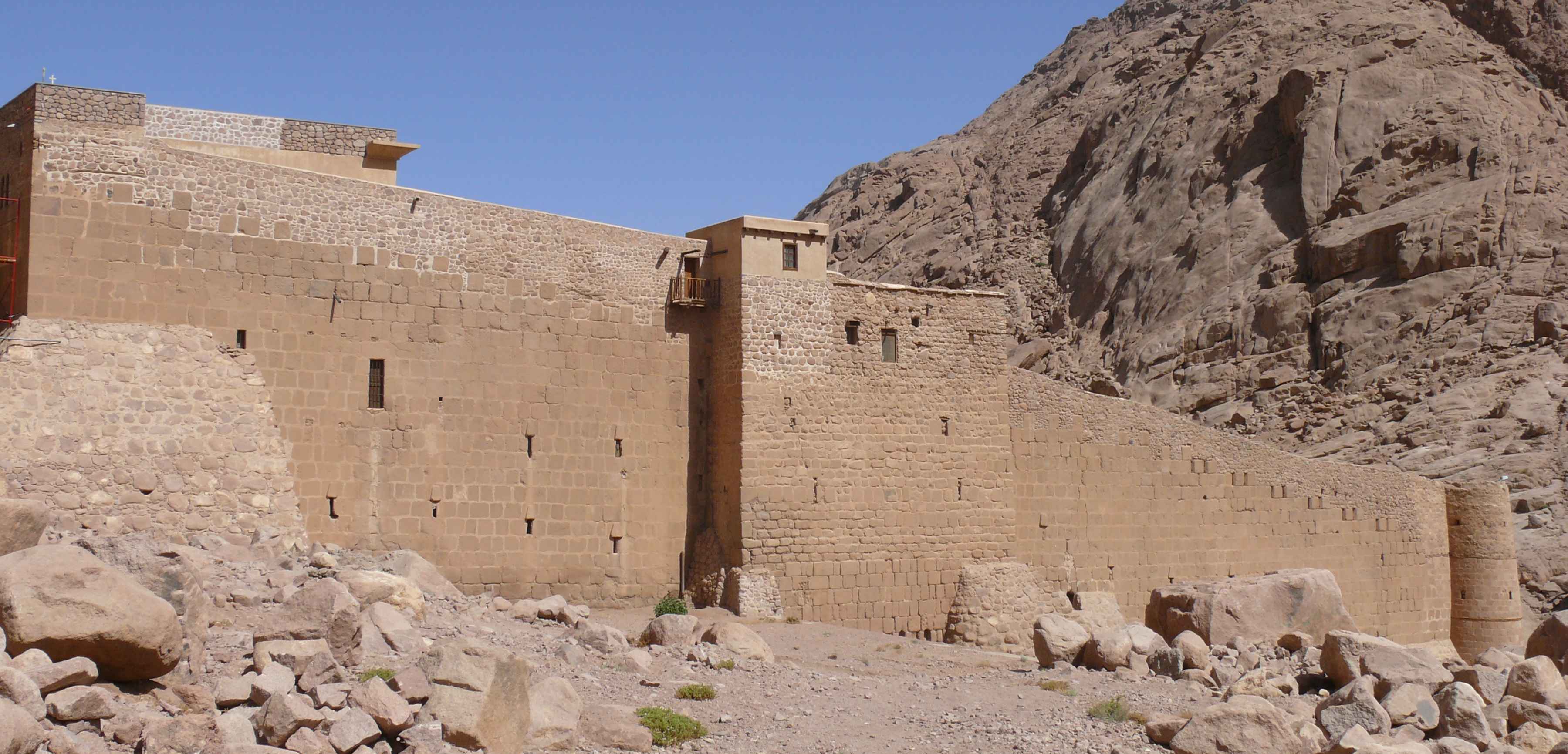SINAI MONASTICISM
The Beginnings of Sinai Monasticism
The history of Sinai Monasticism begins in the 3rd century. The first monastics came to the Sinai in their yearning to draw nigh to God in the midst of profound silence, isolation, prayer, and holiness. Centered at the site of the Burning Bush, the early anchorites settled throughout the south Sinai, where the traces of their chapels and cells can be seen to this day. They were moved by the same mystical longing that attracted monastics to the deserts of Scetis and the Wadi Natrun, or to the deserts in the Judaean wilderness.


The early monastics suffered constant privations, and some were also crowned by martyrdom. Many at the time lived in solitude during the days of the week, and gathered at a central chapel on the Lord’s day for common prayer and the celebration of the Divine Liturgy. It is estimated that by the seventh century there were some six hundred monastics living in the region of Sinai.
Saint Helen
The Emperor Constantine ended the persecution of the Christians. Having seen the sign of the Cross in the heavens at the decisive moment when he was marching towards Rome, he desired to found a church at the place of the Crucifixion and Resurrection of Christ that would be the most splendid church in all the empire. He appointed his mother Helen as Augusta, and gave her unlimited access to the imperial treasury, requesting that the Church of the Holy Sepulchre be adorned with precious marbles, and its ceiling coffered and gilded. The Augusta Helen went to Jerusalem in the year AD 327, and the monks of Sinai appealed to her for the construction of a church at the site of the Burning Bush. This chapel is sometimes referred to as the Chapel of Saint Helen, and is dated to the year AD 330.
A tower constructed at that same time survives within the complex of the monastery, and is the site of the Chapel of the Life-giving Spring.

Justinian
The flourishing of Sinai monasticism was greatly aided by the command of the Emperor Justinian (who reigned from 527-565 AD) to construct a great basilica at the site of the Burning Bush, and high surrounding walls. The emperor also commanded that soldiers be sent to construct the basilica and fortress, and to continue to reside in the area and protect the monastery.
Two inscriptions dating from that time are carved into the beams of the basilica. The one said, “For the salvation of our most august emperor Justinian.” The other says, “For the memory and repose of our departed empress Theodora.” The empress Theodora died in the year 548, and the basilica is first mentioned by Procopius, writing about the year 556. This allows a dating of the basilica to within a few years. To this day, the fathers of Sinai commemorate the sovereigns Justinian and Theodora at every Liturgy as the founders of the holy monastery.
Arabs and the Holy Monastery of Sinai
The Arab conquest of Egypt dates to AD 641. The Holy Monastery of Sinai survived this change of rulership, which is attributed to the Letter of Protection. The remaining Christian inhabitants of Sinai either converted to Islam or left the peninsula. In subsequent history, the number of monks at Sinai declined, so that in the ninth century the brotherhood numbered no more than thirty. Yet at this time of isolation and hardship, the monks were consoled by the recovery of the relics of Saint Catherine and their translation to the monastery. It was at this same time that monks from Syria and Georgia came to Sinai, seeking refuge, and bringing with them precious manuscripts.
During the eleventh century, in the years of Caliph Al-Hakim, the Sinai fathers endured many hardships. The construction of the mosque and minaret within the monastery walls dates from this time, and aided the monastery is overcoming the difficulties of those times, and confirming the peaceful relations that had existed between the monastery and the local bedouins.
The Monastery during the Second Christian Millennium
The second millennium of the history of the monastery is characterized by its recognition throughout the Christian and Moslem worlds. The monastery became the goal of pilgrims from all over the Christian world, and numerous dependencies of the monastery were founded in the Middle East and in Europe. At the same time, the peaceful way of life of the monks won the respect of the Moslem world. At the beginning of the sixteenth century, when Egypt became part of the Ottoman Empire, the monastery once again found itself united politically with the ancient Orthodox patriarchates, as it had been in early Christian times. The patriarchs confirmed the prerogatives that the monastery had received in earlier eras, recognizing its autonomy. The monastery received the support of numerous rulers during this time, both Christian and Moslem.
The Crusaders
The Crusades and the establishment of the Latin Kingdom of Jerusalem (AD 1099-1270) promoted the monastery as a place of pilgrimage, thus ending the earlier isolation that had lasted for some 350 years. The monastery received special care from the Pope of Rome, and the Order of Saint Catherine was established for the protection of the monastery. At the same time, the monastery managed to avoid involvement in the political turmoil of that time, and did not deviate in its confession of the Orthodox Faith. To this day, one may see inscriptions and votive offerings left by the pilgrims during the time of the Crusades.
The Ottomans
The Ottoman conquest of Egypt in 1517 brought the Holy Monastery of Sinai under the protection of Sultan Selim I, and reunited the monastery with the Orthodox patriarchates, as it had been in the days of the early Christian Empire. The Ottoman rulers confirmed the prerogatives of the monastery and the Archbishop of Sinai. The Sinai dependency in Constantinople became an important spiritual centre in its own right, and the Orthodox Patriarchs on various occasions met there when they had need to resolve certain ecclesiastical matters. The example of the Sultan was followed by the Christian rulers of Europe, who extended their protection and respect to the monastery.
During the seventeenth century, the dependencies of the Holy Monastery of Sinai were extended, especially to Greece, and these played important roles in cultural and educational activities. This was especially true of the Sinai dependency at Herakleon, in Crete, which at that time was ruled by the Most Serene Republic of Venice. In the eighteenth centuries, Sinai dependencies were established in Egypt, Asia Minor, Palestine, Romania, Russia, Georgia, and as far away as India. These all served as important educational centers, promoting religious and spiritual activities.




